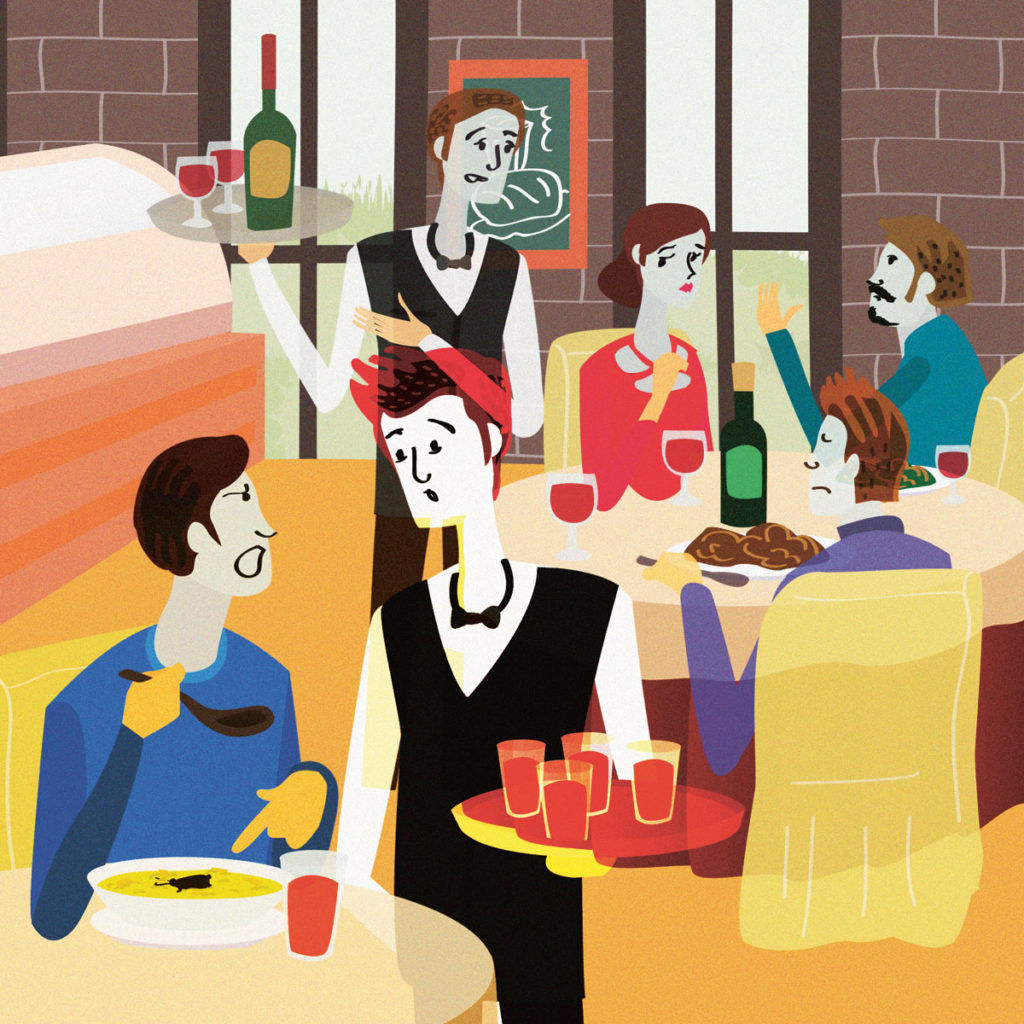A number of establishments still thrive on the old catchcry “the customer is always right.” That, however, doesn’t always hold true since customers can take advantage of a situation.
Many diners today feel that they are experts in hospitality just because they frequently eat out. While some are just out to abuse the system of service and get discounts or freebies, there are those who are just too blinded by their own self-interest and just cannot be pleased. Scout for these scoundrels and don’t be fooled.
As Bill Gates said, “If you have a customer or client who is seemingly impossible to please, learn from them; this doesn’t mean you need to keep them as a customer, but ask yourself what you can do differently in the future to avoid a similar problem.”
The case of the infested soup
One time, I received a call from one of my managers advising me that a customer claimed to have found a cockroach in his soup. My manager was adamant that it was not possible as they had checked the facility and the workflow of the dish’s production and that there was no instance where a cockroach could have been in the mix.
The customer was demanding compensation, or else he would have it out in the media. Our manager apologized and offered to replace his soup at no charge. More importantly, he guaranteed to investigate the incident and update the customer on the findings. The next day, after a thorough investigation, we ended up with only two plausible scenarios. Since the customer was sitting on the terrace outside, either the roach had flown into his bowl or the customer was setting us up.
Stick to your guns. If you have a strong HACCP or hygiene system then be wary of customers who find something completely out of the ordinary in their food. The customers you should never give into are the ones who resort to threats and blackmail.
After long discussions with the board, we wanted to fight the case as we refused to be bullied. We recommended investigating the customer, but the final decision was to settle and ask the customer to sign a confidentiality statement to avoid publicity.
After days of negotiation and 30 minutes of settling the dispute, we received a call from our competitor asking if we had a customer who complained about finding a cockroach in his food. As it turned out, the same guy had done this to four other establishments in the past week and also demanded compensation. This restaurant told us that they had all refused to cough up money and were working together to file a joint legal case against the individual.

The case of the not-so-young kid
Most buffet restaurants have a price for children based on age and, more commonly these days, height. The number of people who abuse this and argue with establishments about their children’s ages seems to never end. Most policies will have children under the age of five eating for free, between five to 12 paying half the price, and people above the age of 12 paying full.
Back when I was managing restaurants, our weekends would have at least 50 logs of customer complaints and disputes about children’s ages. Some would be eight years old with the parents telling us that they were only five. And most 14-year-olds would magically be 11.
The case of the thirsty couple
Many buffet restaurants offer beverage packages as an upgrade. They are a nightmare to police since they cause people to show their worst side. Couples order just one free flow package, and when the staff is busy busing tables, the partner takes sips and drinks from the same glass. When waiters inform them that they will be charged for two packages and that they will be provided with a fresh glass, the couple argues their case and raises hell. But the moment the crew points to the CCTV and asks them if they would like to review the tapes, the couple usually admits defeat and agrees to pay for what they have consumed.
Always investigate incidents and get back to your customers with your findings as they appreciate this and gain a greater respect for your establishment when you take their comments seriously.
The case of the discount dilemma
This is the root of all evil for cashiers. The issue usually arises when members try to use their membership discount along with a voucher, which would result in a double discount or what we call a double dip. Regulations often stipulate that the rebate cannot be used in conjunction with any other offers.
Does this protect the establishment? In the eyes of the customer, no, because apparently, customers are not told about this policy even if it is written in the rulebook. It is allegedly the establishment’s responsibility to make sure they are told to read the terms and conditions before they get on the program.
The case of the dreaded wine connoisseur
The conversation usually goes like this:
“I am sorry, I do not like this wine. I want to select a different bottle and change this one.”
“Oh, I am sorry sir/ma’am that you do not like this wine. Is the wine corked?”
“Well I just don’t like it and want to change it. Look, I am entertaining some clients so please just give me the wine list and change this wine.”
“Okay, I will just check it to make sure that it is corked. If it is not then this wine will still need to be settled at the end of the night as there is nothing wrong with the wine.”
“How dare you! It is corked. What is your name? I know the owner of this establishment. I will speak to them and also speak to all my friends to never come back here. You are a disgrace to the industry and I am your regular customer (who only comes once a year) and this is how you treat me in front of my clients?”
If the wine is not corked, then you pay for it. If the staff gives you a wine with the wrong vintage or a corked wine, then they bear the responsibility. When a person purchases a new flavor of potato chips and ends up not liking the taste, he can’t get a refund for the chips, right? It’s no different in a restaurant.
If the product is cooked correctly and it matches the description on the menu, why do diners feel they have an obligation to just change the dish and throw away the money it cost to produce the first one? It is a judgment call that the team makes at that particular moment, but it does not mean that the customer is always correct in such cases.
Industry notes
- Stick to your guns. If you have a strong HACCP or hygiene system then be wary of customers who find something completely out of the ordinary in their food. The customers you should never give in to are the ones who resort to threats and blackmail.
- Always investigate incidents and get back to your customers with your findings as they appreciate this and gain a greater respect for your establishment when you take their comments seriously.
- Have a strict and clear child policy that is not open to interpretation. Implement a strict policy on children’s ID for verification (passport, birth certificate, school ID, etc). If they don’t carry one, then the parents need to abide by the height rule.
- Make sure you follow the laws when creating memberships and vouchers and that all your terms and conditions protect you from customers who try to exploit the system. A prime example is the senior discount being used together with other discounts in the Philippines. Know your legal rights and obligations.
- Be careful with offering unlimited beverages, especially for large groups that only want the offer for half the table and not the other half. There’s an 80 percent chance that customers will abuse the policy.
- Make sure you have someone who has a strong knowledge of wine if your establishment has a medium (20 different bottles or more) selection. Empower your people to make informed and wise decisions and provide support in your organization chart to ensure the waitstaff is not left to deal with situations that they have not been trained for.
Originally published in F&B Report Vol. 13 No. 5






Very informative!